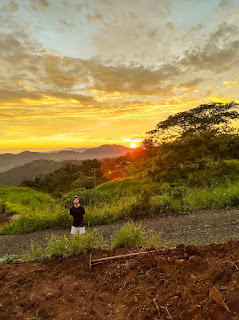Self-sufficient-farm diary #5: Basil processing
Since we are in our infancy of beeing self-sufficient, we feed ourselfs with kinda basic foodstuff. Which in itself is not the worst thing to happen. I mean at least we are not hungry but our longterm goal deffinitly is being able to diversify our eating habbits.
Because we are living in Costa Rica in a area, which could not get any more rural it is not only healthier, better for the enviroment and cheaper, but also necessary to produce a variety of products our own. The reason for that is, that the country does not produce many products themselves and because they are not a rich country by any means, they are also not able to import much. the result beeing, that there are not much of a selection in the local shops.
So toady we harvested all the basil we had growing in the greenhouse.. Make shure to not only harvest the leaves put also the stalks. That way, the plant can better redevelop itself. We planted a lot of it in between the other plants because we read, that it is supposed to keep of the "white fly". This is a parasite, that lays its eggs into the leaves and their babies then sucking out the juice. The basil was getting so big, it started falling over, so we figuerd it was the right point to harvest.
First step was peeling the leaves of the stalks. The leaves on the one site for pesto and the stalks and flowers on the other for oil and vinegar.
We already started making vinegar with the leftovers from oranges and bananas. So we just used the flowers and stalks to change up the taste of it. We read, that this is a good way of upgrading vinegar and oil. It is just an experiment since we never tried it before. Maybe it ends up beeing something we do regularly. For the oil we used regular Canola oil.
We had a really huge pile of basil leaves, I estimated about 1.5kg (3.3lbs), which was great beacause that way we were able to create a variety of pesto types. We ended up with six jars of basil and half a huge jar where we just blended the basil with oil on top to conserve it.Sadly we did not have any cheese, which normally belongs in traditional italian pesto, and no extra virgin olive oil, because, as I said, many things are hard to find in Costa Rica. So we needed to adjust a little and we are happy with the results.
This was our easy pesto recipe without cheese:
120g canola oil (extra virgin olive oil replacement)100g basil leaves1 clove of garlic (optional, if you like the taste)10g salt (use less if your nuts are already salted)110g peanuts / almonds / pistachiosVariant: add 1 lemon worth of juice
I am very new, when it comes to these works in the kitchen, meaning this was my first try in making pesto. During the short research, I did, I noted, that is important to mix most ingridients separatly (don`t ask me why) and that it is better to pour in the oil while blending to keep the structure alive. Also do not blend the basil to long or you are at risk of destroying the taste and smell of it.
The last thing we needed to do, was to put a layer of oil on top to make it last longer. When you are careful while filling the basil in the jars, with this method, it should be conserved even outside the fridge for a while.
Our favorite to date is the one with peanuts and lemon. I would be happy for inspirations for other recipes. The next harvest will be there soon. Especially without cheese. Let me know, if you have some :)
 |
| our basil-yield :) |
*Disclaimer: Some of the links used on this site are amazon refferals, meaning that I get a promotion, when someone buys something over this link!






Maybe add some other herbs, like oregano, no?
ReplyDelete